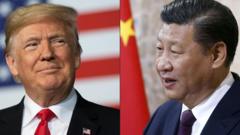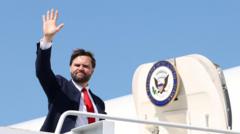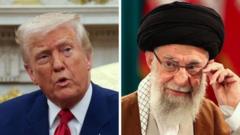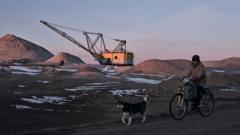Greenland is at the center of a growing geopolitical struggle as nations vie for access to its untapped mineral wealth, essential for modern technologies. While mining companies like Amaroq Minerals seek to capitalize on these resources, local sentiments about employment and environmental impacts raise questions about the future of mining in the region.
Greenland's Mineral Riches: A Tug of War Between Geopolitics and Economic Aspirations
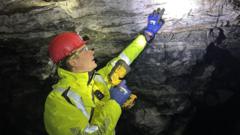
Greenland's Mineral Riches: A Tug of War Between Geopolitics and Economic Aspirations
As Trump reaffirms US interest in Greenland, the territory's untapped resources attract global attention amidst rising geopolitical tensions.
The race for Greenland's mineral riches intensifies as geopolitical dynamics shift, especially in light of former President Donald Trump's reiterated interest in the Arctic territory. Greenland, an autonomous part of Denmark, boasts vast reserves of rare earth elements and metals essential for technology, yet it asserts its sovereignty amid external claims.
Eldur Olafsson, the CEO of Amaroq Minerals, envisions a prosperous future for Greenland’s mining sector, asserting, “We can either walk off site every month with a suitcase of gold, versus a 30,000 tonne ship [carrying the ore].” The company has started ramping up production at its Nalunaq site, where it has exploration licenses covering over 10,000 square kilometers.
Despite its potential, Greenland currently sustains only two active mines, positioning the island as a neighbor to temptation but still mired in a complex relationship with resources. The territory possesses the world's eighth-largest deposits of rare earth elements and significant quantities of lithium and cobalt, yet the economy remains reliant on public sector funding and fishing, buoyed by a $600 million annual subsidy from Denmark.
The increasing global focus on Greenland's resources correlates with a broader strategy among Western nations to secure alternatives amid rising tensions with China, which dominates the rare earth market. Notably, US diplomatic efforts have sought to limit Chinese influence in mining, showcasing the strategic importance of Greenland's untapped wealth.
However, mining in Greenland is fraught with challenges, including harsh climatic conditions, a lack of infrastructure, and stringent environmental regulations. The territory's geography is daunting, with 80% covered by an ice sheet and rugged terrain complicating operations.
Local sentiments are mixed; while politicians hope that mining could reduce dependence on Danish subsidies and catalyze a new economic era, many residents remain skeptical about whether the anticipated benefits will truly reach them. Feedback from figures like Heidi Mortensen Møller and union leader Jess Berthelsen reflect concerns that profits may leave the territory, benefitting outsiders more than locals.
While Minister Naaja Nathanielsen acknowledges an increased interest in Greenland's resources, actual investment remains slow. Efforts to streamline licensing processes could potentially expedite future ventures, but tangible results are yet to surface.
As Greenland navigates this intersection of potential wealth and geopolitical interest, the coming years will be crucial in determining how its resources are leveraged. The balance between profit, local benefit, and environmental stewardship continues to loom large over discussions about the island's mining future.





